
This interview was conducted on the occasion of the exhibition Dungeon Keepers at Piana Gallery Foundation in Krakow, which marks the very first gallery-based collaboration between Stach Szumski and Botond Keresteszi. Their inspiration stemmed from a common element in their work – the undeniable urge to delve deeper into the layers of visual culture produced by humankind. The exhibition takes the mesmerizing form of a mining map, skillfully guiding us through a labyrinth of images entwined within a dense network of tunnels, each holding its own unique association and profound meaning. In Stach’s works, we find ourselves following the trail of natural textures and hypnotic organic shapes, suggestive of the exquisite decay that forms a natural stage for material transformation. Botond’s work on the other hand resembles layers of anthropogenic sediments, allowing us to discern the historical strata of human activity. Each layer reveals an array of captivating images, sculptures, and objects hailing from diverse cultures and regions, weaving together a remarkable tapestry of human expression.
The following conversation took place between Prague, Budapest, and Michałowice on the 8th of June 2023.
Piotr: I wanted to ask you about your collaboration since this is not the first project you have worked on together. What is the nature of your cooperation and what were the occasions where you met before? Also, I’d like to ask about the moment when you saw each other’s works, when the chemistry started to kick off.
Stachu: I have known Botond’s work for a few years. Maybe I had seen your stuff around 2017 or 2018, I guess. I was kind of following it, more as a virtual kind of fandom and then we met physically during the Graphic Biennale in Ljubljana in September 2021.
Botond: And then we hung out a lot there, and right after that, you came to Budapest for several exhibition projects, including the one where we painted this wall together in November 2021 at the AQB.
Stachu: Yes, Boti organized the wall at the Art Quarter Budapest space, where we had our initial collaboration. It was a spontaneous, improvised wall painting. Now when I think about it, I realize it was actually the only time we properly worked on one piece together. That painting happened on the walls of the concrete corridor leading to the now defunct limestone mine. The mining theme has also been with us since the beginning of our cooperation.
Botond: That was when the idea of making an exhibition was brought up for the first time. From my side, when I first saw your work, it was Mark Fridvalski who sent it to me and said, “You should check this guy. He’s amazing. He’s awesome with an airbrush.” I checked your Instagram and realized that we were following the same graffiti accounts. And all of a sudden I saw your likes everywhere. I would call it a common taste. What left a big impression on me back then were your gigantic murals in abandoned spaces, in rundown buildings – the Sudeten Ziggurat. To me, it felt like some kind of post-Soviet shaman thing. I really loved that.

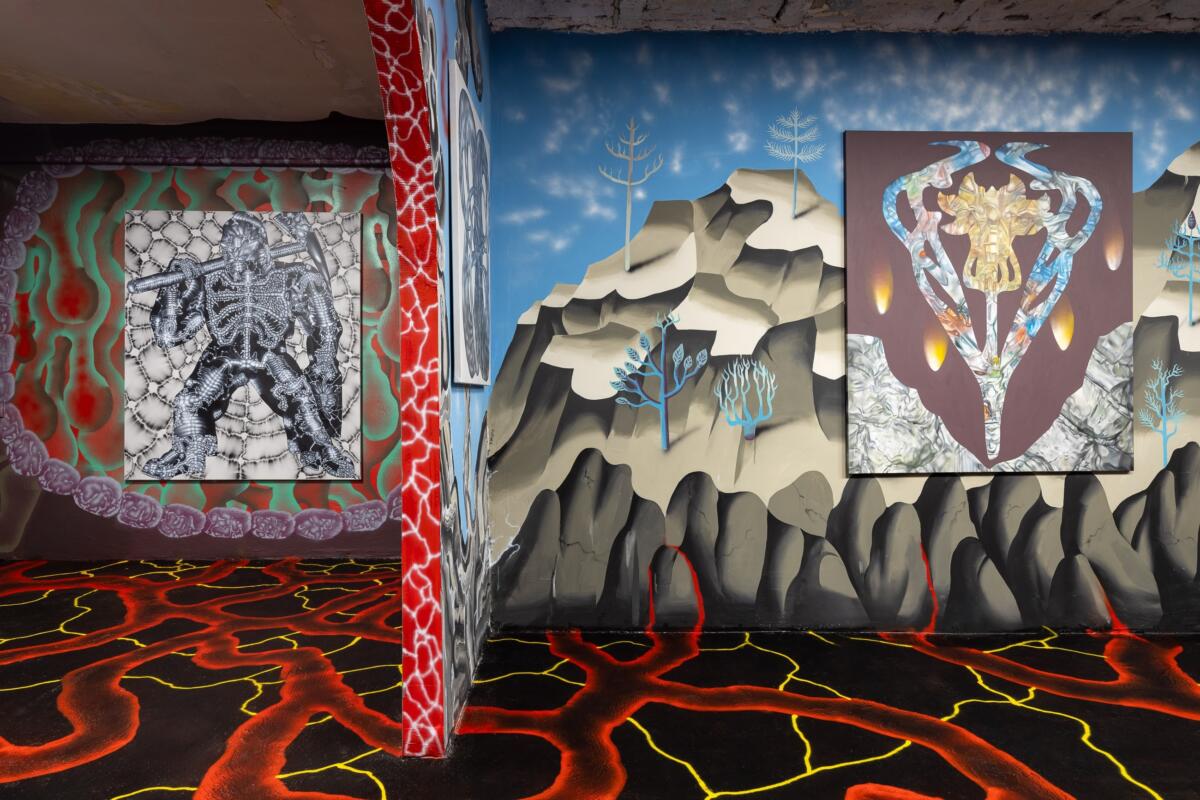
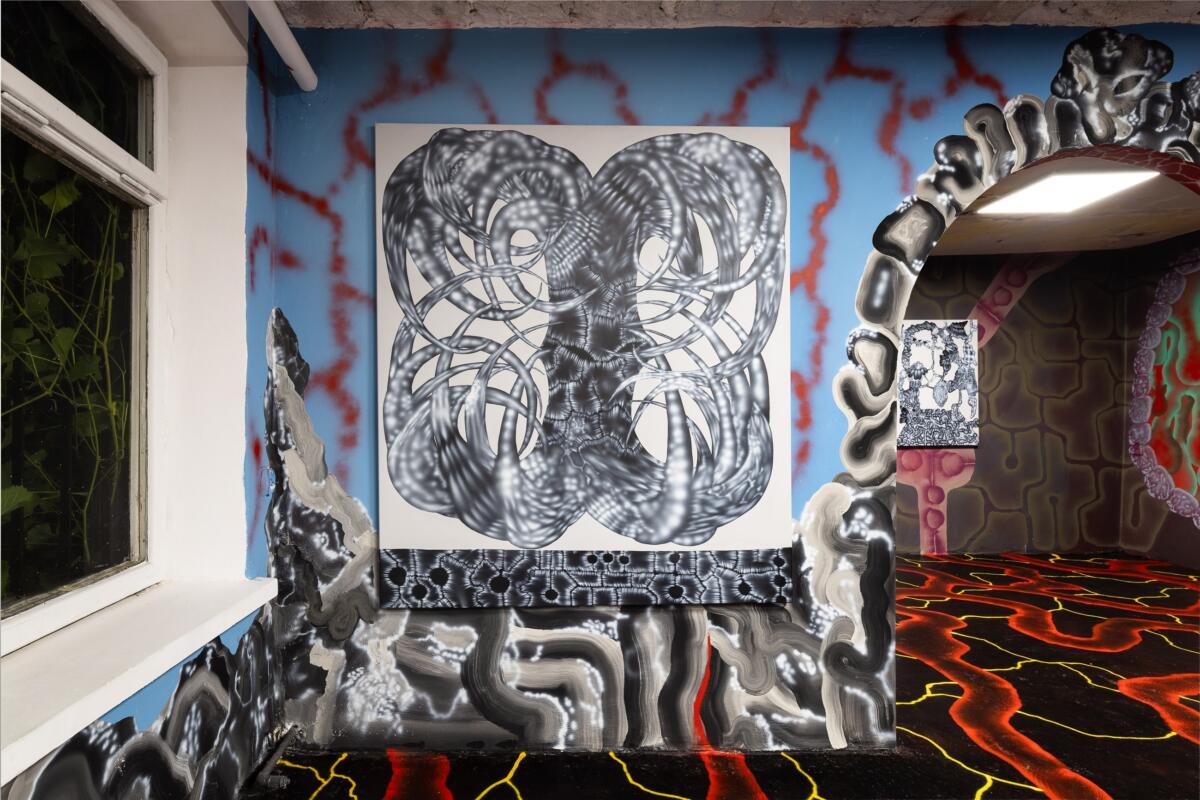
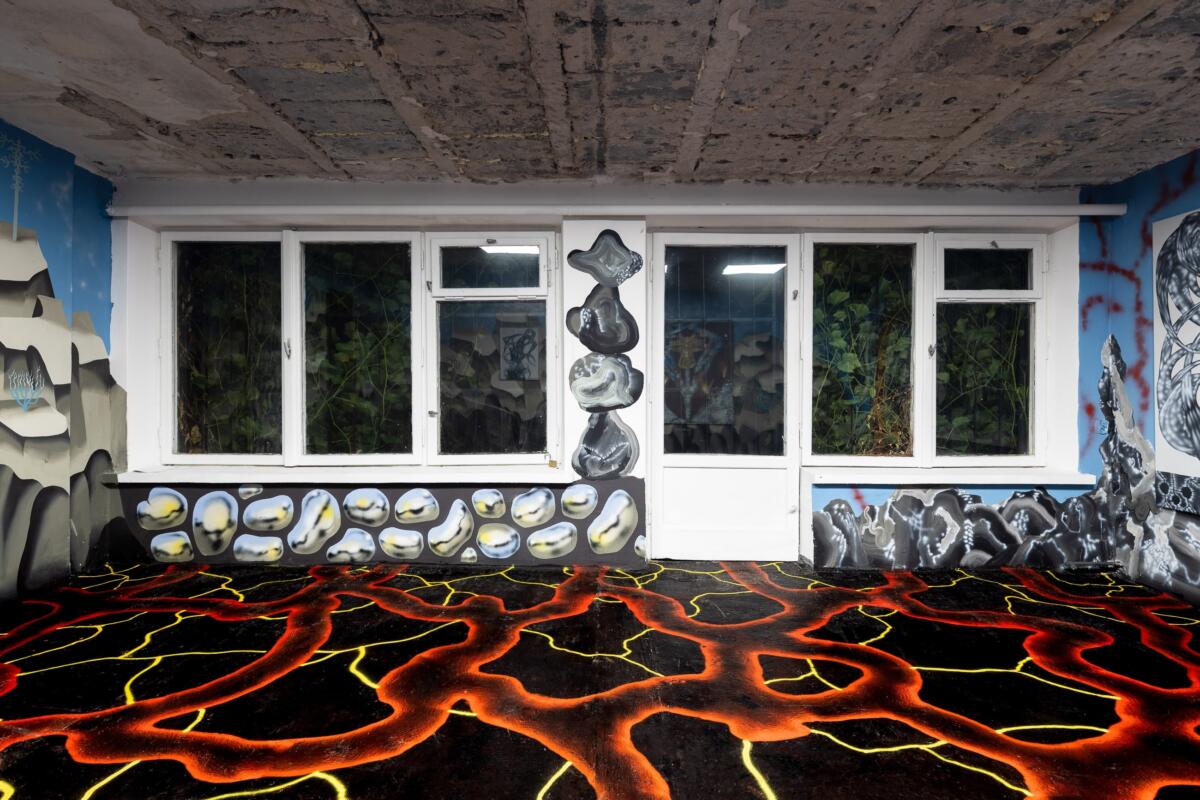
Botond, do you also have some experience in graffiti?
Botond: I have been following this cultural phenomenon since the early 2000s. I was a teenager, and I never went deep into this subculture, but I always knew what was going on, especially in Hungary. During my art studies I made friends with some graffiti artists. We put together a crew and would bomb a small train or a wall. To this day, I have a special place in my heart for graffiti.
Stachu: In my case it was the other way around — from graffiti to the art academy. Graffiti was my entry-level activity. So, the first seven years of my artistic hustle were strictly outdoor-based. I did a lot of small drawings, but spray paint remained my main tool. I was just exploring all the abandoned factories in my region, as well as train lines, track sides, and all the railway-related areas.
In my case it was the opposite – from graffiti to other forms of artistic activity, including painting. Graffiti was my ingress into art, and the first seven years of my creative activities were mainly concentrated on outdoor work, happening in the casemates of collapsed industrie of Lower Silesia. In parallel, I drew a lot, but spray paint remained my main tool. I explored the local train line, the Jelenia Góra valley was full of various post-German and post-communist infrastructures and factories.
Despite the differences in your backgrounds, you seem very enthusiastic about your collaboration. Where does this enthusiasm come from?
Stachu: I think that Botond and I have a lot in common in terms of approach towards our work by turning our parallel ongoing research into paintings. It seems to me that the key element connecting our approaches is morphism, i.e. the free transformation of shapes and objects into a kind of fusion, in which various objects merge into a unity in which particular elements are difficult to define. I started practicing this morphic approach around 2016 when I started using airbrush. This also marked the beginning of a period of experimentation with textures and ornamentation, and blurring. I believe we have this in common – this urge to melt, connect, and morph.
Botond: Yeah, I felt it when I returned to using oils, which I had neglected for some years after university. Once I came back to it, I considered it relevant also because it allows fluidity and has a metamorphic structure encrypted within itself.
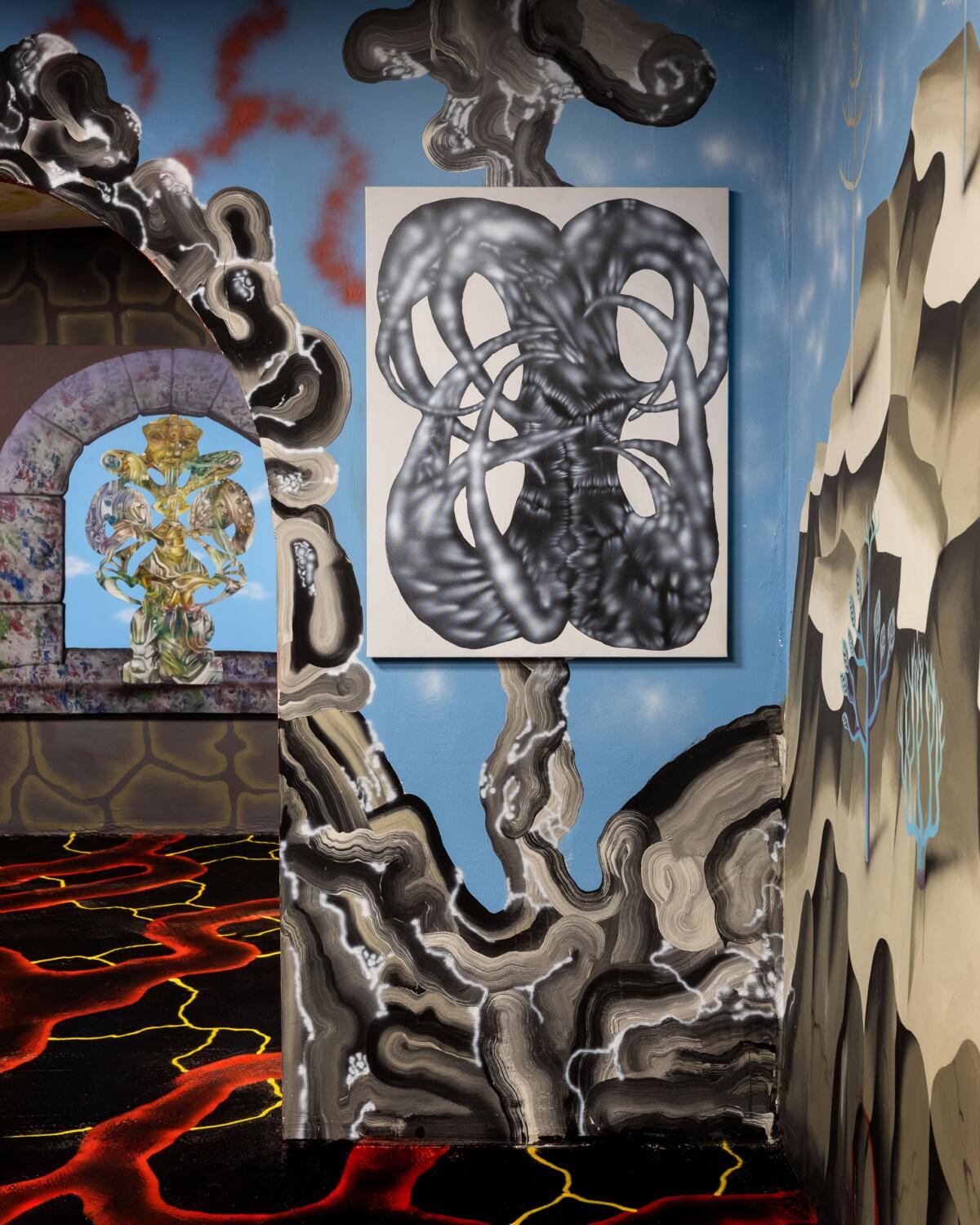


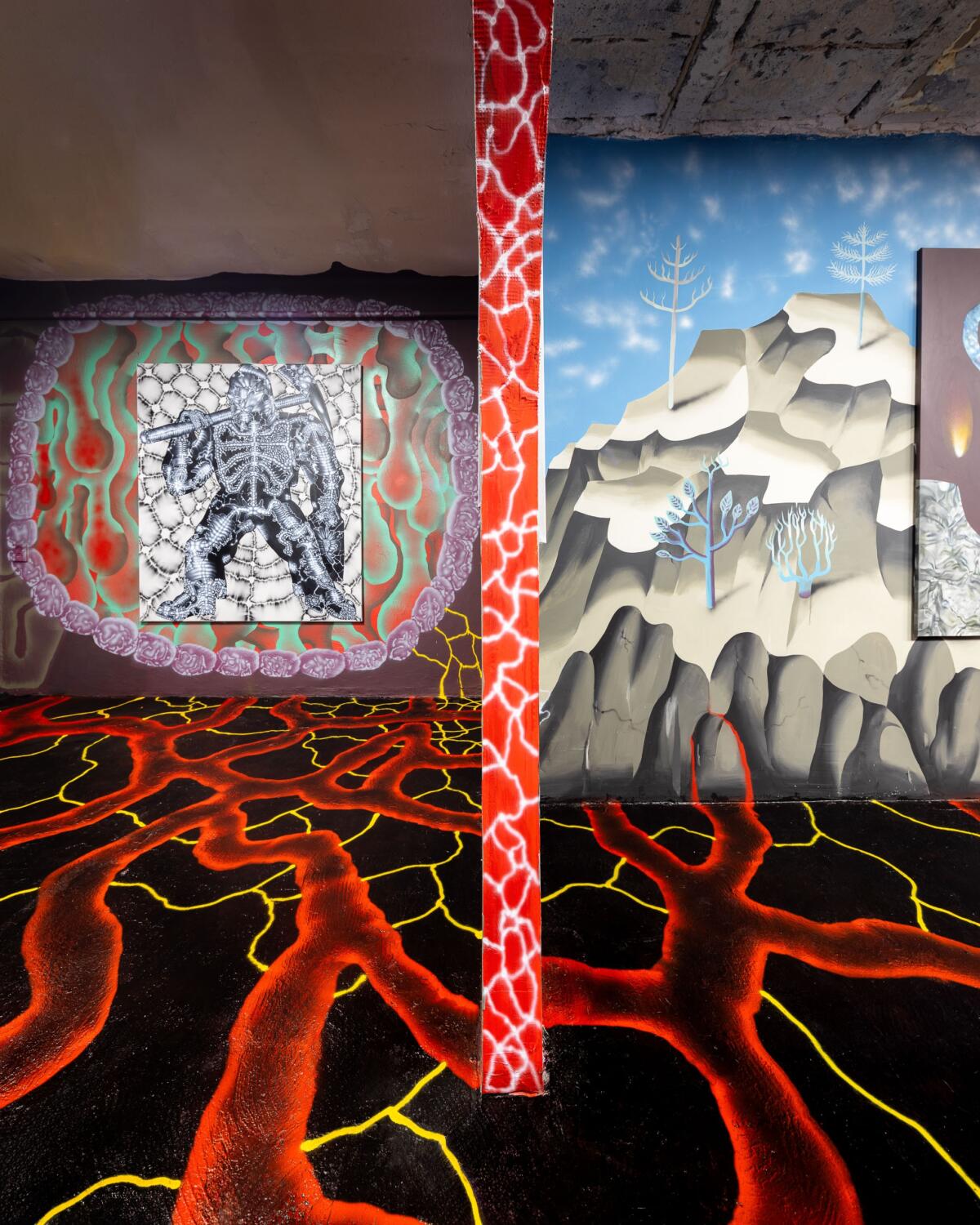
When it comes to the process of morphing, it encompasses two distinct directions. On one hand, there is the morphing that breathes new life into an entity, infusing it with fresh energy, much like two trees intertwining and growing together. On the other hand, there exists a morphing characterized by decomposition, akin to a parasitic mushroom leeching onto a host. So, which aspect of morphing captivates you more?
Botond: Initially, my style leaned towards vibrant expressions. I employed fewer elements to focus on precision. Reflecting upon it now, I perceive my work as a digital photo collage painted onto the canvas. As time progressed, I incorporated even more elements, widening my range of inspiration. This newfound breadth allows for playful construction of meaning, which gradually becomes more elusive and nebulous. Pinpointing a specific object within the painting becomes arduous, giving rise to a sense of monstrous parasitic forms.
Stachu: In my case, the process of creating a work often begins with a specific motif, which gradually undergoes an improvised mutation – or a kind of decomposition, then I enter the role of a visual reducer, digesting a larger form with an ornamental thallus driven by an improvised hand gesture. In these detailed textures, you can see organic motifs referring to structures observed in organisms such as slime molds, fungi and lichens. Despite frequent dialogue with decomposition (reducent) in terms of textural inspirations, it is also in dialogue with the life-creative force of forming new shapes, which can definitely be attributed to this more symbiotic and vital part of the life cycle.
Perhaps the dichotomy of life and death is not entirely accurate, as nature, too, blends the two seamlessly. Now, I’m curious about your fascination with caves, mines, and tunnels—the connection you forge with the past, embedded in the land.
Botond: In my case, it’s really connected to my artistic statement, which describes how history is seen as layers in the cultural field. I’m really interested in different periods of art history and the history of visual culture, from antiquity to modern design. It was fascinating for me to follow the history of Heinrich Schliemann, who found Troy under twelve layers of cultural sedimentation. My work is a melange of many sedimentary layers where you might find Lego Bionicles and children’s toys, metal tools, and classical sculptures. You are welcome to dig through the fossils of human culture.
Stachu: Plus, you are from a mining city, right? Tatabánya.
Botond: I wasn’t born there, we moved there when I was three years old. But mainly, my whole childhood and teenage time I spent there. The mines were closed in 1993. My father worked for a mine for a couple of years but then the industry stopped, as in many regions of Europe. On the hill next to the town there is a massive limestone cliff where you can find a huge cave with a giant hole in the ceiling through which you can see the sky. We used to hang out there with friends after all the tourists were gone. It looks like a concert hall, and it could be a perfect example of this Platonic cave. You can easily imagine the fire and the shadows there with the moon shining from above.
Stachu: There was a granite quarry in my hometown in the Karkonosze Mountains. When I was a little kid, I felt the vibrations from the detonation and mining processes. Exploitation stopped when I was three years old. The ruins of the quarry and the memory of explosions coming from a distance remain to this day. The sight of this quarry – the brutal scar that runs deep into the matrix of the solid granite – has made me need to understand the geological structure of the ground on which I am located, and the circumstances in which it was formed.


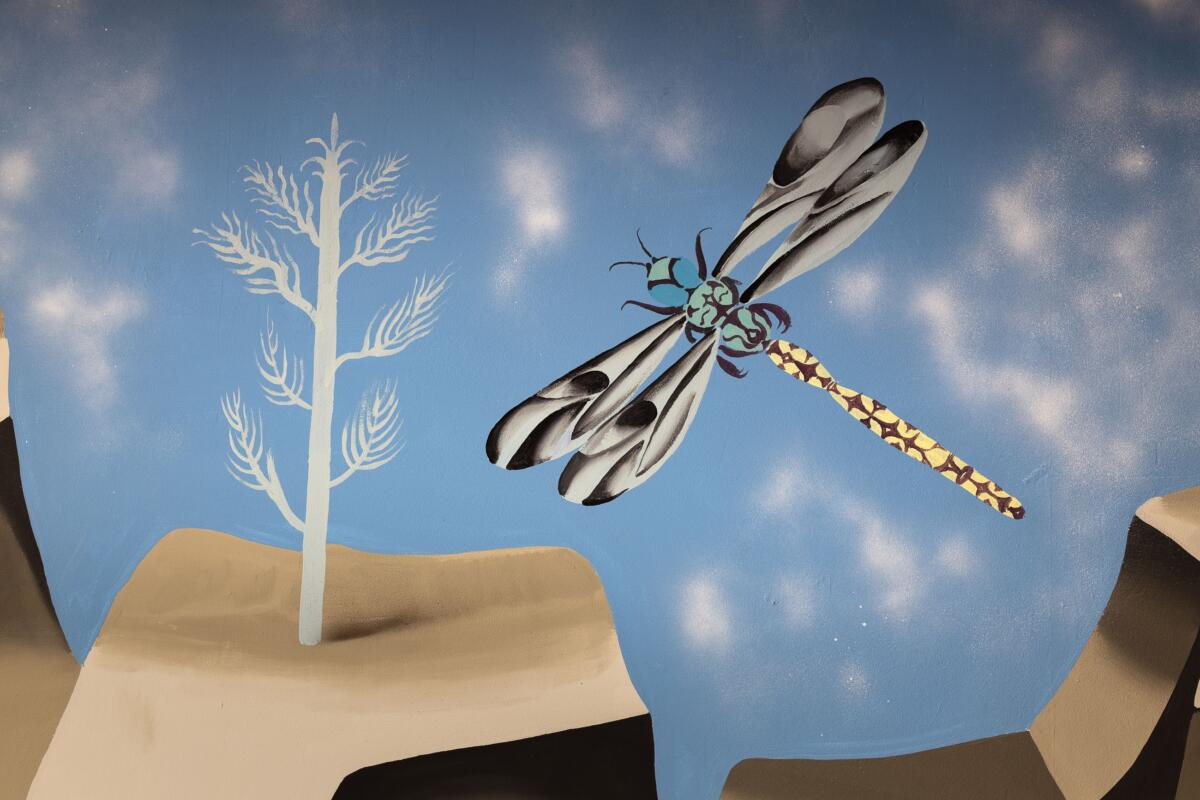
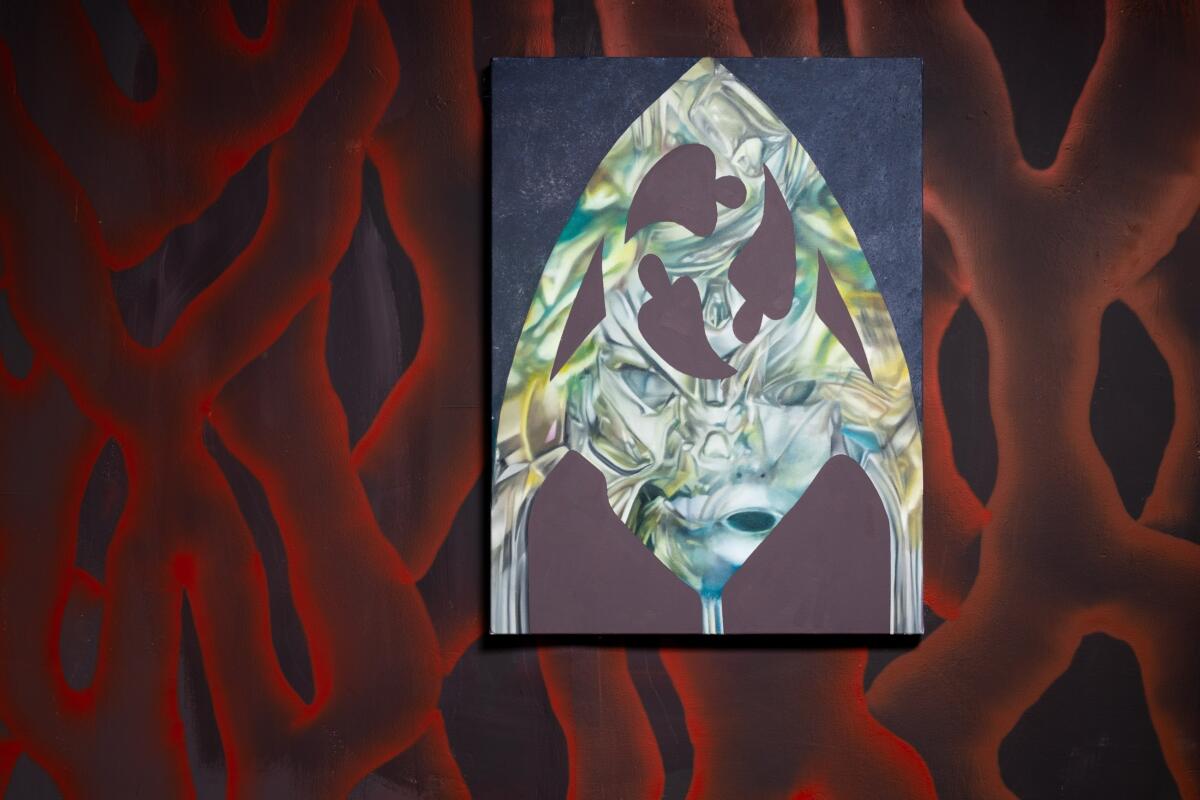
What about the infamous uranium mines in the region?
Stachu: About 10 kilometers in a straight line from my family home, in Kowary, there was the second largest uranium mine in the Eastern Bloc. They exploited a huge vein there (uranium is often found inside the granite that the Karkonosze Mountains are made of). The mine was only active for a decade, during which the vein was completely depleted. Nowadays, the corridors of the mines are filled with water, and you can observe post-uranium colonies of bacteria in it which often take the form of algae-like clusters.
Botond: I think it’s a very common thing with all of these post-Soviet countries that the mines closed; during the 90s it was a new era of stopping coal mining.
I think it was rather a matter of privatization and massive tunneling of state-owned industries, which for instance was very common in Czechoslovakia.
Stach: Do you think that in any way they began to pay attention to environmental protection at that time? The coming wave of privatization led to a massive downsizing of industry, which was ultimately quite ecological locally, were it not for the fact that production moved to China with a multiplied force.
Botond: Climate change wasn’t a big topic back then but you remember for sure the phobia of holes in the ozone. Have you seen the movie Highlander*?, the second one when the sky was orange because the ozone layer was gone? People lived under a huge cupola-like dome.
It looked like NYC does now, because of the fires in Canada.


*Highlander II: The Quickening was a science fiction film released in 1991. The film takes place in 2024, when air pollution has caused the destruction of the ozone. Eventually, a crew of scientists led by the main protagonist, Connor MacLeod, was able to create an electromagnetic shield to protect the Earth. The protection saves the Earth, but with the side-effects of condemning the planet to constant darkness.
Edited by Ewa Borysiewicz and Katie Zazenski
Imprint
| Artist | Stach Szumski and Botond Keresteszi |
| Exhibition | Dungeon Keepers |
| Place / venue | Piana Foundation Gallery |
| Dates | 17.06.2023 - 30.07. 2023 |
| Photos | Metastrongfiction |
| Index | Botond Keresteszi Piana Foundation Gallery Piotr Sikora Stach Szumski |
